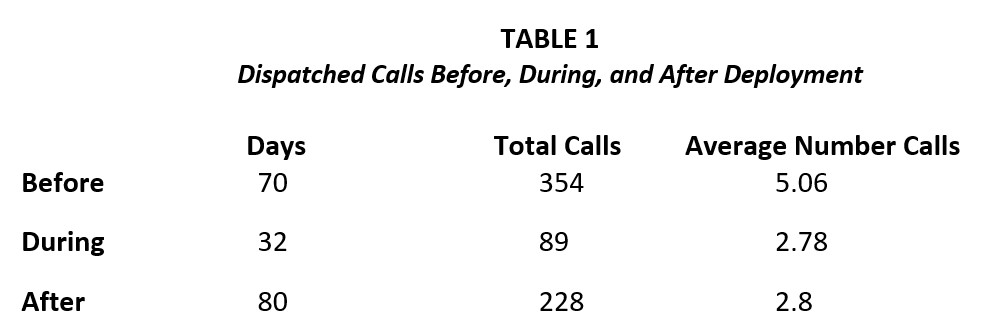
Research
2024 | SUMMER
Effects on Calls for Service of Police ‘Scarecrow’ Cars
John L. Worrall, Quinn Gordon, and P.A. Zanolini Jr.
Research
2024 | SUMMER
Effects on Calls for Service of Police ‘Scarecrow’ Cars

John L. Worrall, Quinn Gordon, and P.A. Zanolini Jr.
Deterrence theory suggests individuals weigh the costs and benefits of their unlawful behavior. When individuals perceive a greater likelihood of being punished, they are less likely to engage in criminal behavior. While police presence has been related to having a deterrent effect, the use of direct action to address unlawful behavior is not always needed to deter behavior.
Agencies use of technology such as CCTV, speed and red-light camera systems have varying levels of impact on detecting criminal behavior. For example, the impact of CCTV varies by the number of cameras being monitored and the number of suspects who become aware of their use after they were arrested.
The use of speed and red-light cameras have been linked to reductions in speeding and crashes. Automated license plate recognition (ALPR) systems are used in a more proactive approach to increase arrests of suspects and reducing specific types of crimes. Despite their effectiveness, the use of these technologies can be too costly for many agencies.
The purpose of this study was to evaluate the impact of intentionally placing empty, marked police vehicles, referred to as ‘scarecrow cars’, in areas to reduce calls for service. To accomplish this, researchers partnered with the Mesquite, Texas Police Department to place empty, marked cars in a high-traffic business district. Researchers measured the number of property crimes officers were dispatched before, during, and after the deployment of the vehicles. Specifically, these three periods were 70 days prior to the intervention, 32 days of intervention, and 80 days after the vehicles were removed.

Researchers found there were fewer dispatched calls after cars were placed in the shopping center parking lots. During the test period, there were an average 2.78 calls per day as compared with 5.06 prior to placement. In addition, the reduction in dispatched calls continued after the use of scarecrow cars were discontinued with the average number of calls. The number of calls for service rose only slightly to 2.8 calls per day in the 80 days post deployment period. The deterrent impact for the during and after deployment stage were both determined to be statistically significant. These findings support agencies employing the use of scarecrow cars to cost-effectively reducing crime in specific areas.
John L. Worrall, Quinn Gordon, and P.A. Zanolini Jr., “Effects on Calls for Service of Police ‘Scarecrow’ Cars,” Police Practice and Research, Vol. 23, No. 6, pp. 647-660.















